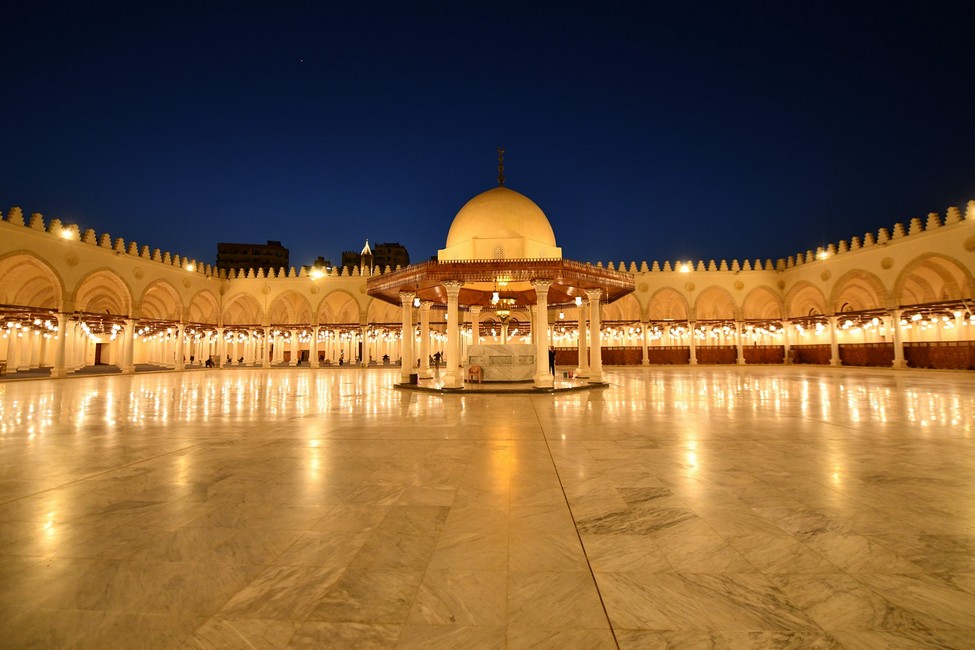The Amr ibn al-As Mosque is a profound symbol of Islamic history and civilization in Egypt, standing as the country’s oldest mosque and one of Africa’s earliest Islamic monuments. Founded shortly after the Islamic conquest of Egypt, this mosque embodies the origins of Cairo as a center of faith and culture. Its rich legacy, architectural evolution, and spiritual significance make it an unmissable destination for history, architecture enthusiasts, and devout visitors alike.
Location: Nestled in Historic Old Cairo
Located in the heart of historic Fustat, the first capital of Islamic Egypt the mosque sits near the modern district of Old Cairo. This strategic location at the crossroads of ancient trading routes emphasizes its historical role as a religious and social hub. Visitors accessing the mosque find themselves amidst a rich tapestry of Cairo’s Old City, neighboring Coptic and Islamic landmarks.
History: From a Commander’s Tent to a Majestic Mosque
Established in 641–642 AD by the Muslim general Amr ibn al-As, who led the conquest of Egypt under Caliph Umar ibn al-Khattab, the mosque was initially a simple structure made of palm trunks and mud. This site, marked by the commander’s tent, soon became a focal point of Egypt’s burgeoning Muslim community. Over centuries the mosque expanded and transformed with contributions from Abbasid, Fatimid, Mamluk, and Ottoman rulers, reflecting changing architectural styles but maintaining its original spiritual essence.
Architectural Design: A Blend of Humble Beginnings and Grand Expansions
The mosque’s architecture evolved from a modest prayer area to an expansive complex with a large hypostyle hall, multiple courtyards, and grand arches. It contains over 150 ancient columns, repurposed from Roman and Greek temples, adding to its unique character. Minarets were added with Ottoman influence, and ornamental wooden minbars and mihrabs were incorporated over time. The overall design blends early Islamic simplicity with ornate influences from successive Egyptian dynasties.
Sections of the Mosque: Spaces for Worship, Study, and Community
The mosque comprises prayer halls, a spacious courtyard with ablution fountains, and ancillary rooms serving spiritual and communal functions. The prayer hall, lined with vast rows of columns, invites congregational worship. Adjacent areas have traditionally hosted educational and community gatherings, making it a vibrant religious center through centuries.
What Makes Amr ibn al-As Mosque Unique?
Its distinction as Egypt’s oldest mosque and the first Islamic structure in Africa lends the mosque unparalleled religious and historical importance. The mosque uniquely incorporates architectural elements from ancient civilizations, demonstrating the cultural fusion characteristic of early Islamic Egypt. Its survival through centuries of political changes and urban development, alongside continuous use for worship, makes it a living monument linking Egypt’s past with present.
Fascinating Facts About Amr ibn al-As Mosque
- The site was chosen after a dove nested in Amr ibn al-As’s tent, seen as a divine sign.
- Originally made of palm leaves and mud bricks, the mosque grew significantly over centuries.
- Its columns include those taken from ancient Egyptian, Roman, and Greek buildings.
- It served as the center for the Islamic capital al-Fustat before Cairo’s founding.
- It stands as a powerful symbol of the introduction and spread of Islam in North Africa.
Conclusion
The Amr ibn al-As Mosque remains an essential landmark capturing Egypt’s Islamic origins and architectural evolution. Visiting the mosque allows a journey through history, faith, and art all housed in one remarkable complex. It invites exploration and reverence, offering a timeless connection to Cairo’s spiritual and cultural roots.




